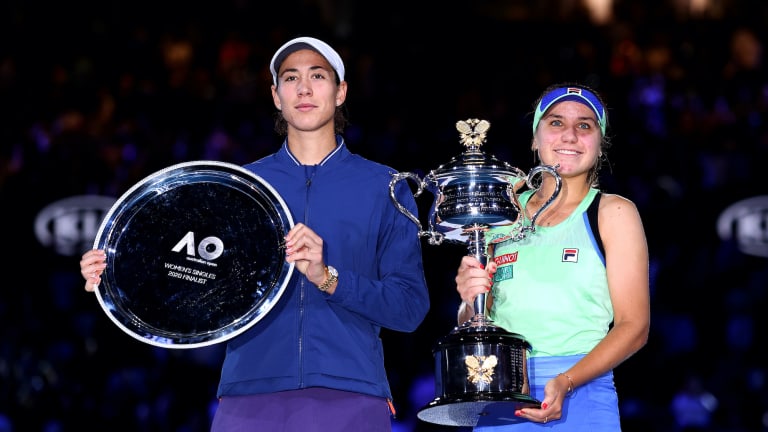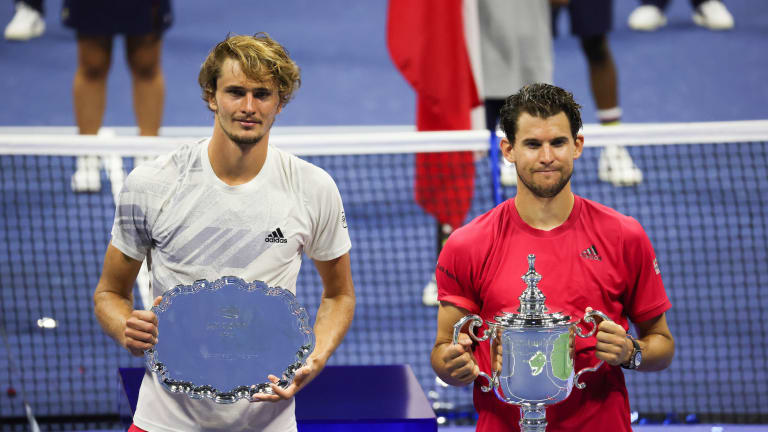Champions of 2020: Kenin and Thiem led the way through tough times
By Dec 21, 2020Social
Dominic Thiem ‘loves’ watching Jakub Mensik and Joao Fonseca
By Apr 16, 20252024 Year in Review
A Poem for 2024: An ode to Zendaya, a biblical bee invasion, and the art of playing naked
By Dec 29, 2024Social
Roger Federer hails Dominic Thiem's 'thunderous backhand' in retirement tribute
By Oct 23, 2024ATP Vienna, Austria
Dominic Thiem retires: Every emotional photo we captured following his farewell match
By Oct 22, 2024ATP Vienna, Austria
De Minaur, Tiafoe, Musetti win as Thiem ends career with first-round loss in Vienna
By Oct 22, 2024ATP Vienna, Austria
Dominic Thiem, 31-year-old former US Open champion, retires in Vienna
By Oct 22, 2024Tennis.com Interview
Matteo Berrettini finds joy again after refusing to let go
By Oct 22, 2024Facts & Stats
10 things to know about Dominic Thiem’s career as he retires from professional tennis
By Oct 22, 2024Tennis.com Interview
Dominic Thiem was “unlucky not to win more Grand Slams” says Thanasi Kokkinakis—“Tennis will miss him”
By Oct 21, 2024Champions of 2020: Kenin and Thiem led the way through tough times
Players dealt with an unbeatable opponent this season, but some truly rose to the occasion.
Published Dec 21, 2020
Advertising

Champions of 2020: Kenin and Thiem led the way through tough times
© 2020 Getty Images
Advertising

Champions of 2020: Kenin and Thiem led the way through tough times
© 2020 Getty Images